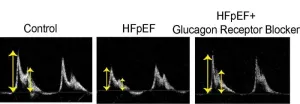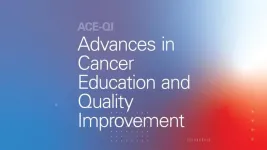Lisa Robinson, lrobinson@aap.org
Alex Hulvalchick, ahulvalchick@aap.org
American Academy of Pediatrics Announces its First Clinical Practice Guideline for Opioid Prescriptions
Pediatricians should prescribe opioids for pain when necessary, with recommended precautions in place to increase safety, according to a clinical practice guideline released during the AAP 2024 National Conference & Exhibition
ORLANDO, Fla.--The American Academy of Pediatrics has published its first clinical guideline for pediatricians on prescribing opioids, including explicit instructions on how and when to prescribe these medications for pain while reducing the long-term risk of addiction.
The “Clinical Practice Guideline: Opioid Prescribing for Acute Pain Management in Children and Adolescents in Outpatient Settings” marks a shift in clinical practice by also recommending a routine prescription for naloxone—a medication used to reverse overdoses—alongside every opioid prescription.
The guideline and an accompanying technical report will be published in Pediatrics online Monday, Sept. 30, during the American Academy of Pediatrics 2024 National Conference & Exhibition in Orlando, FL. from Sept. 27-Oct. 1, 2024. Authors of the clinical practice guideline, published in the October 2024 print issue of Pediatrics, will present discuss, “The New AAP Clinical Practice Guideline on Acute Pain Management and Use of Opioids in Outpatient Settings,” in a session from 2-3 p.m. Sept. 30 at the Orange County Convention Center, West Building, W312.
Clinical practice guidelines created by AAP are written by medical experts, reflect the latest evidence in the field, and go through several rounds of peer review before being approved by the AAP Board of Directors and published in Pediatrics.
“There’s been a big pendulum swing in the practice of medicine over the last two decades—first with opioid-overprescribing, then with a huge cutback in opioid prescribing, likely leaving some children’s pain undertreated,” said Scott Hadland, MD MPH MS, FAAP, lead author of the guideline. “We want pediatricians to prescribe opioids when they’re needed because untreated pain can lead to distress and psychological harm. At the same time, physicians need to take steps that reduce the long-term risk for addiction.”
In 2018, 8.9% of adolescents 15 to 19 years old had at least one new prescription for opioid medication in the preceding year. Most who receive an opioid prescription do not develop an opioid use disorder (“addiction”) or have an overdose. One-year prevalence rates for developing an opioid use disorder or experiencing an overdose after a prescription range from 0.3% to 5.8%.
Since 2000, rates of opioid use disorder have increased dramatically among children and teens. Meanwhile, rates of prescribing of opioids have decreased since the 2010s. However, this decline likely represents a decrease in not only inappropriate use, but also potentially appropriate use, according to the AAP, leaving some children’s pain undertreated.
The AAP clinical practice guideline recommends:
Pediatricians can and should prescribe opioids. However, they should do so in conjunction with other non-pharmacological approaches, such as physical therapy, to reduce pain and improve function. They should also be prescribed alongside other non-opioid medications, including acetaminophen and ibuprofen. Every prescription for opioids should also include a prescription for naloxone, an overdose reversal medication. This is key to treating overdose in anyone in the household who takes too much opioid medication—not only the child to whom the medication is prescribed, but other family members, including younger children in the house. All children and teens should have equitable access to effective pain treatment. Black, Hispanic, and American Indian and Alaska Native individuals are less likely than white individuals to receive timely and effective pain management (including with opioids), even after accounting for the level of pain across a range of pain conditions—many of which result in severe acute pain. Patients and caregivers should be given educational materials on pain control therapies, opioids, and safe storage and disposal of medications. They should also receive teaching on how to recognize the signs of an opioid overdose and how to intervene. AAP outlines several restrictions around prescription of codeine and tramadol, which are only FDA-approved for use in adults. They should not be prescribed in children younger than 12; in patients ages 12-18 with certain chronic conditions; in patients younger than 18 after tonsillectomy or adenoidectomy; or in patients who are breastfeeding. The clinical guideline contains 12 key action statements based on evidence from randomized controlled trials, high-quality observational studies, and, when studies were lacking or could not feasibly or ethically be conducted, from expert opinion. Each key action statement includes a level of evidence, the benefit-harm relationship, and the strength of recommendation.
AAP urges additional research into ideal dosing and duration of treatment with opioids in pediatric populations.
“For a patient with mild to moderate pain, doctors should always start nonopioid medications and treatment,” said Rita Agarwal, MD, FAAP, FASA, an author of the guideline. “Opioids do remain an important tool for acute pain relief. But there are times when acetaminophen and ibuprofen may be equally effective with fewer side effects, such as in procedures such as tonsillectomy, wisdom teeth removal, and fractures. We recommend that families talk with their pediatrician about options on how to best manage a child’s pain.”
###
END



